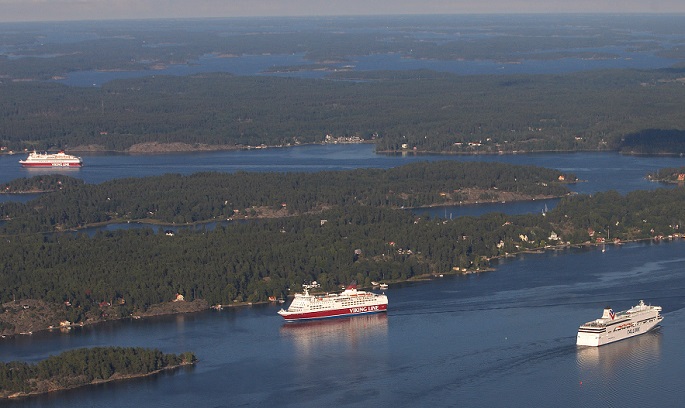Ships link to onshore power at Helsinki, Stockholm, Tallinn
Published : 09 Nov 2021, 23:10
Updated : 09 Nov 2021, 23:15
Three Baltic Sea ports- Helsinki, Stockholm and Tallinn- have invested in onshore power electricity connections that will significantly reduce the emission of air pollutants from vessels at the quayside, said the City of Helsinki in a press release on Tuesday.
Large numbers of goods and passengers are transported daily in the ships run between Helsinki-Stockholm and Helsinki- Tallinn.
In a collaboration to agree standards and solutions, the three Baltic Sea ports have invested simultaneously in onshore power connections at each of the ports.
Now the final part of the puzzle is in place to make it possible for the ferries operating on the Helsinki - Tallinn route to connect to onshore power.
All of the ferries operating on other routes between the ports, Stockholm – Helsinki and Stockholm – Tallinn, already connect to onshore power at the quayside.
“The passenger and goods supply routes are important, and every year 380,000 haulage vehicles or trailers are transported by ferry among the ports in Stockholm, Helsinki and Tallinn. The onshore power connections at the Värtahamnen Port are part of an important joint environmental initiative with other Baltic Sea ports to achieve our environmental goals,” said Mayor of Stockholm Anna König Jerlmyr.
Investment in onshore power connection is an important element in achieving the ambitious sustainability goals that the ports and cities have agreed on. This contributes significantly to reducing emission of greenhouse gasses and air pollutant emissions by the ferries when they are at the quayside. Some of the ferries have been connected to onshore power at the quays for a number of years.
This collaboration means that all of the ferries operating services among the three ports will soon be connected to onshore power.
The reduction of greenhouse gases as a result of the ferries operating at the ports connecting to onshore power is estimated to be more than 18,000 tonnes of carbon dioxide annually.
“One of the most important strategic goals for the Port of Helsinki is to be a role model for sustainable development. Reduction of emissions requires concrete actions. These investments in onshore power are proof of our determination to achieve our goals,” said Ville Haapasaari, CEO at Port of Helsinki Ltd.
“Slowing down the acceleration of climate change will depend on every company’s current activities. As the important transport and logistics hubs by the Baltic Sea, the biggest ports have a clear responsibility to ensure that the air is cleaner at the ports as well as in the urban surroundings. Considering the improved air quality and reduced noise pollution, onshore power supply is a great project not only for all citizens and visitors of Tallinn, but also for the ship operators, who can positively contribute to the development of the city environment through this project,” said Valdo Kalm, CEO at Port of Tallinn.
Under normal circumstances (times of non-pandemic) there are 200 cargo-loaded ferry sailings a week in total among the three ports. Each year about 4,500,000 tonnes of freight, or 380,000 haulage vehicles/trailers and 12 million passengers travel by ferry among the three capital cities.
For many years all of the ferries have offloaded sewage and recycled waste sorted-at-source in the respective ports. All of the ports work actively with environmental goals and various types of improvement initiatives.


